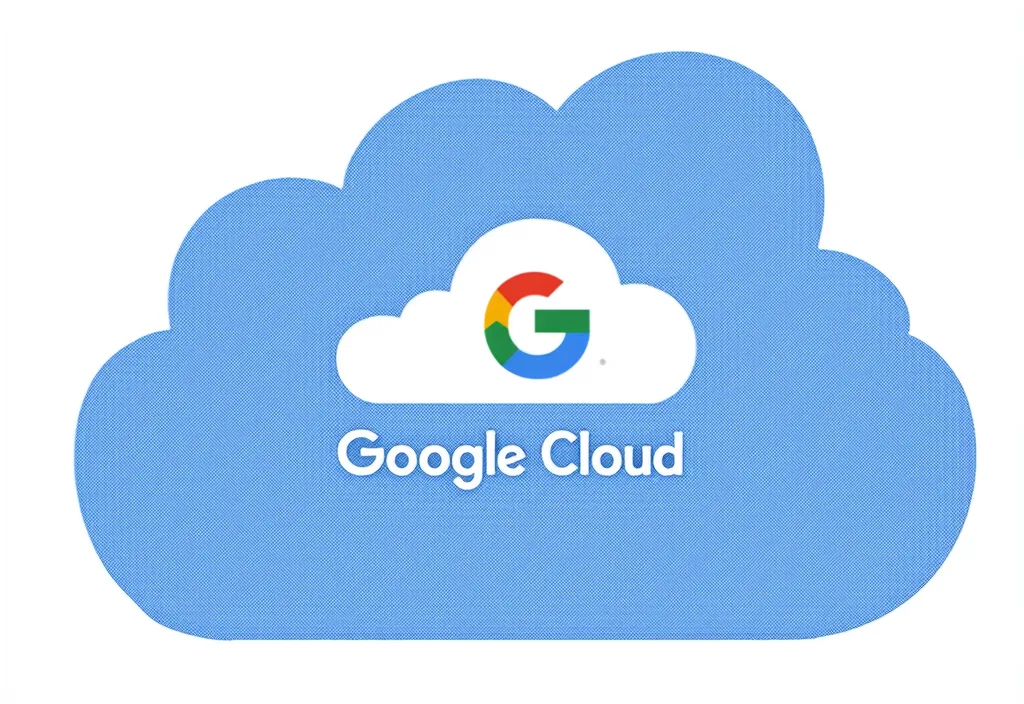Cloud Computing
Getting Started with Google Cloud Run: Deploy and Scale Containerized Applications with Ease
 Quest Lab Team
Quest Lab Team
Most businesses and developers today are constantly seeking solutions that offer flexibility, scalability, and cost-effectiveness for deploying applications. Google Cloud Run, a serverless computing platform, have became the solution as a leading solution for containerized application deployment. Offering automatic scaling, easy integration with CI/CD pipelines, and a pay-as-you-go pricing model, Cloud Run enables developers to deploy and manage applications with unparalleled ease and efficiency.
Since its release, Cloud Run has garnered significant attention, becoming a staple for developers interested in serverless architecture. Cloud Run’s appeal lies in its versatility: it combines the benefits of containers with the serverless model, making it accessible to companies of all sizes. In this article, we explore what makes Google Cloud Run stand out, covering its architecture, setup process, and recent updates, along with practical advice on leveraging it for production-grade deployments.
What is Google Cloud Run?
Google Cloud Run is a fully managed compute environment that allows users to deploy containerized applications that can scale automatically with demand. Unlike traditional VM or Kubernetes-based deployments, Cloud Run abstracts away infrastructure management, allowing developers to focus on their applications. It supports any stateless container, making it compatible with a wide range of programming languages, frameworks, and services.
"Cloud Run provides an interface between modern containerized applications and the scalable, event-driven nature of serverless, making it an essential tool in a developer's toolkit."
The Need for Serverless Containerization
As businesses increasingly embrace microservices and cloud-native applications, the demand for serverless platforms has soared. Traditional serverless solutions, while scalable, often come with limitations on runtime or language support. Containers solve this by encapsulating applications and dependencies, enabling compatibility across environments. Google Cloud Run offers the best of both worlds: serverless simplicity with container compatibility, empowering developers to deploy, test, and scale their apps without worrying about infrastructure constraints.
Developers who previously hesitated to adopt serverless due to runtime limitations can now benefit from a serverless experience without compromising flexibility. This shift has been especially beneficial for companies deploying services that experience fluctuating demand, such as e-commerce, media streaming, and SaaS.
Key Features and Benefits of Google Cloud Run
- Automatic Scaling: Cloud Run automatically scales instances up and down based on incoming traffic, ensuring resources are only used as needed.
- Container-Based: Run any language or framework by deploying a stateless container, enabling a high degree of flexibility.
- Fully Managed: Google handles all infrastructure, including load balancing and security patches, allowing teams to focus on application development.
- Pay-as-You-Go: Only pay for the time your container is active, making it cost-effective, especially for apps with variable usage patterns.
These features make Google Cloud Run particularly suitable for startups and SMBs, as well as enterprise-level applications that demand resilience, security, and elasticity without significant overhead.
Setting Up Google Cloud Run: A Step-by-Step Guide
Setting up Google Cloud Run is straightforward, especially for developers familiar with Docker. Below, we guide you through the setup process to get a containerized application running on Google Cloud Run.
- Install the Google Cloud SDK and Docker on your local machine.
- Authenticate your Google Cloud account using gcloud auth login.
- Create a new Google Cloud project using gcloud projects create my-cloud-run-project.
- Write a simple Dockerfile for your application. For example, for a Node.js app, use the following setup:
- Build and push the Docker image to Google Container Registry (GCR).
- >Deploy the application on Google Cloud Run using the CLI command:
gcloud run deploy --image gcr.io/my-cloud-run-project/my-app.
Once deployed, you can access your application via the URL provided by Cloud Run, and scaling will automatically adjust based on traffic.
Recent Updates and Improvements to Google Cloud Run
Google Cloud Run has continued to evolve, introducing features that enhance both developer experience and performance. Key updates include support for regional deployments, which allow users to deploy services closer to their user base for reduced latency. Additionally, Cloud Run now offers integration with Google VPC for secure, private networking and improved load balancing capabilities that support larger workloads.
Enhanced Security with VPC and IAM Integration
Google Cloud Run's integration with VPC Service Controls and IAM provides an extra layer of security, giving administrators fine-grained control over access and reducing exposure to the public internet.
- VPC: Enables secure, private connectivity within your Google Cloud environment.
- IAM: Offers robust role-based access control for secure collaboration across teams.
How to Optimize Costs on Google Cloud Run
One of Cloud Run's most appealing aspects is its cost-efficiency. You only pay for the time your container is actively handling requests. Here are some strategies to minimize costs:
- Optimize Resource Allocation: Adjust memory and CPU limits according to your application's needs to prevent over-provisioning.
- Enable Cloud Run Revisions: Use revisions to deploy and test new versions of your app without disrupting the existing service.
- Monitor Usage: Use Google Cloud's built-in monitoring tools to analyze usage patterns and optimize service configurations accordingly.
Advanced Configurations for Google Cloud Run
As teams grow more accustomed to Google Cloud Run, they often seek to customize their services to maximize performance and control. Advanced configurations in Cloud Run allow developers to fine-tune their deployments. Here are some of the most impactful configurations:
- Concurrency Settings: By default, Cloud Run allows multiple requests to be handled by a single container instance. Adjusting concurrency settings can improve resource utilization for highly parallelizable tasks.
- Environment Variables: Use environment variables to securely manage configuration data across different environments, simplifying deployments and ensuring consistency.
- Traffic Splitting: Cloud Run’s traffic splitting feature lets you gradually roll out new versions by distributing traffic across different revisions. This approach is ideal for canary deployments and A/B testing.
Hands-On Example: Deploying a Python API on Cloud Run
To demonstrate how to deploy an API on Google Cloud Run, we’ll walk through an example with a Python Flask application. This API will expose an endpoint that returns JSON data. Here’s the process from Dockerizing the app to deploying it on Cloud Run.
1. First, set up a basic Flask app in a file called <code>app.py</code>:
2. Next, create a Dockerfile for your Flask application:
3. Once the Dockerfile is ready, build and push the Docker image to Google Container Registry:
4. Deploy the app on Cloud Run using the following command:
Your Flask API should now be live and accessible at the URL provided by Cloud Run. This simple example demonstrates how quickly you can take a Python API from code to deployment.
Case Study: How a Leading E-commerce Platform Scaled with Cloud Run
One notable example of Google Cloud Run’s power in production is a leading e-commerce platform that leveraged Cloud Run to handle seasonal spikes in traffic. Prior to using Cloud Run, the platform faced significant challenges scaling their infrastructure during high-demand periods, resulting in increased costs and downtime. By migrating to Cloud Run, they were able to automatically scale their microservices to meet demand, optimizing performance while reducing infrastructure costs by 35%.
The flexibility of Cloud Run allowed them to deploy a mix of Node.js, Python, and Go services as independent containers. During their busiest periods, such as Black Friday and Cyber Monday, Cloud Run’s scalability ensured they could handle 10x their usual traffic with minimal latency. This case study highlights how Cloud Run can address scalability and cost concerns for even the largest enterprises.
Integrating Cloud Run with CI/CD Pipelines
For many organizations, a robust CI/CD pipeline is essential for maintaining code quality and ensuring rapid, reliable deployments. Google Cloud Run integrates seamlessly with popular CI/CD tools like GitHub Actions, GitLab CI, and Google Cloud Build. Here’s a typical CI/CD setup that includes automated testing, containerization, and deployment to Cloud Run.
- Set up your CI/CD tool to monitor changes in your code repository. When a change is detected, trigger a build process.
- Run automated tests to validate code quality.
- If tests pass, create a Docker image and push it to Google Container Registry (GCR).
- Use Google Cloud CLI commands to deploy the updated container to Cloud Run.
A pipeline like this allows developers to deploy code changes quickly and reliably, with the assurance that only tested code reaches production.
Troubleshooting Common Issues with Google Cloud Run
Despite its simplicity, Google Cloud Run can sometimes present challenges, particularly for developers new to serverless environments. Here are solutions to a few common issues developers encounter:
- High Latency: If you experience high latency, try increasing CPU allocation or adjusting concurrency settings to optimize resource usage.
- Cold Starts: Cold starts occur when a new container instance is started to handle an incoming request, leading to a slight delay. To mitigate this, consider running a warm-up job or setting minimum instance counts.
- Permission Errors: Make sure your IAM settings are properly configured. Google Cloud Run requires specific permissions to access services like Google Cloud Storage or Cloud SQL.
Beyond Basics: Advanced Use Cases for Google Cloud Run
As developers gain proficiency with Cloud Run, they can start exploring more complex use cases that require orchestration, integration with other Google Cloud services, and custom monitoring setups. Here are some advanced scenarios where Cloud Run shines:
- Machine Learning Inference: Deploy ML models on Cloud Run for scalable, on-demand inference. For instance, you could serve a TensorFlow or PyTorch model as a containerized REST API.
- Real-Time Data Processing: Integrate with Google Pub/Sub for event-driven architectures. This allows Cloud Run to process data streams in real-time, ideal for IoT and analytics applications.
- Hybrid Cloud Deployments: Use Cloud Run with VPC Service Controls to securely connect your application to on-premises databases or other cloud services, creating a hybrid environment for regulated industries.
These examples illustrate how Cloud Run can extend beyond simple microservice deployment to power sophisticated, enterprise-grade applications in the cloud.
Conclusion: The Future of Serverless with Google Cloud Run
Google Cloud Run continues to redefine serverless by bridging the gap between containerized workloads and fully managed, scalable infrastructure. With support for virtually any language or framework, its potential to revolutionize modern application development is vast. As serverless and containerization trends converge, platforms like Cloud Run will likely become the backbone of innovative cloud-native solutions for businesses of all sizes.
By mastering Google Cloud Run, developers can unlock new levels of agility and efficiency, bringing powerful applications to users faster than ever before. With its robust integration with Google’s broader cloud ecosystem, Cloud Run positions itself as an ideal choice for anyone looking to scale applications effortlessly, now and into the future.
Conclusion: Is Google Cloud Run Right for You?
Whether you’re a startup looking for an affordable deployment option or an enterprise in need of scalable infrastructure, Google Cloud Run offers a compelling solution. By merging the flexibility of containers with serverless automation, Cloud Run enables organizations to deploy robust, scalable applications without the burden of infrastructure management. As the demand for cloud-native, scalable applications continues to grow, Cloud Run’s capabilities make it a leading choice in serverless computing.

Quest Lab Writer Team
This article was made live by Quest Lab Team of writers and expertise in field of searching and exploring
rich technological content on cloud computing and its future with its impact on the modern world



